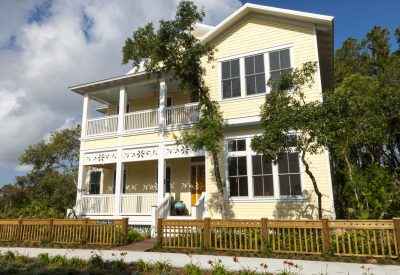Low impact development (LID)
In Florida, pollutants such as road residues, pesticides, fertilizers, pet wastes and other pollutants enter our waterways through stormwater runoff. An estimated 80 to 95 percent of the heavy metals (copper, lead and cadmium) entering Florida waters are the result of untreated stormwater runoff. Natural processes that would otherwise retain, cleanse and filter stormwater have been reduced by the impervious surfaces — roads and rooftops — associated with traditional urban development.
Low impact development (LID) is an approach to land development that uses various land planning, design and construction practices to simultaneously conserve and protect natural resource systems while reducing infrastructure costs. LID stands apart from other concepts through its emphasis on cost-effective strategies at the lot level. Designing an individual site to replicate predevelopment hydrology can reduce the project’s impacts on natural systems.
LID strategies move away from a centralized method of collecting, conveying and discharging water to one that minimizes both impervious areas and stores and treats stormwater in a more distributed fashion, sometimes even on the individual lot level.
LID allows and encourages the integration of treatment and management measures into individual lots or house sites. Strategic placement of distributed lot-level controls — such as preservation of natural on-site wetlands — can be customized to closely mimic a watershed’s natural hydrology. The result is a hydrologically functional landscape that generates less surface water runoff, less pollution and erosion, and reduced overall damage to area waterways.
The St. Johns River Water Management District works closely with applicants applying LID concepts to projects. Senior district regulatory staff members are trained in how to review systems that employ LID practices and attention is given to matching appropriate practices with site specific needs.
Some of the common LID practices include vegetated swales, buffers and strips; barrower streets without curbs and gutters; curb cutaways for median storage; end-of-island bioretention cells; permeable pavers; green roofs; rain gardens, bioretention, rain barrels or cisterns; tree or natural area preservation; in-ground infiltration and storage; and green build programs such as Florida Water StarSM.
Preserving natural vegetation is part of a Florida Water StarSM-certified home and of LID.


